Foreword / YouTube Video Review
This pair of speakers was loaned to me by Buchardt along with their Platin Hub.
The review on this website is a brief overview and summary of the objective performance of this speaker. It is not intended to be a deep dive. Moreso, this is information for those who prefer “just the facts” and prefer to have the data without the filler. The video below has more discussion with respect to the technical merits and subjective notes I had during my listening sessions.
For help understanding the data, I encourage you to watch this video which discusses the implications of (some of) the data shown below:
Information and Photos
Some specs from the manufacturer can be found here.
- Amplifiers: 3 x 150 RMS / 330 Peak watts class D (each speaker)
- Operating principle: 2.5-way Or 3-way sealed enclosure
- Tweeter: 1 x 0,74" Custom fine weave soft fabric textile with CDC aluminum waveguide
- Mid / woofer: 1 x 6" linear long stroke paper cone
- Rear / subwoofer: 1 x 6" linear long stroke paper cone
- Frequency response: 25 - 40.000 Hz +/- 1.5dB (can change with mastertunings)
- DSP: Quad Core processor
- DAC chip: 3 x CS4398 (each speaker)
- Crossover Point: 150 hz / 2800 hz (can change with mastertunings)
- Wireless: WiSA 24 bit / 96khz lossless. Can be paired across brands up to 7.1 setup
- Cabled analogue input: 24 bit / 192khz ADC / Balanced / Unbalanced XLR / 20k ohms input impedance
- Measurements (h x w x d): 365 x 180 x 280 mm (14.4” x 7” x 11”)
- Input voltage: 100-240 Volts AC auto adjusting (EU & US power cords incl.)
- Weight: 9 kg each / 25 kg pair shipping weight
- Warranty: 10 years on speakers / 2 years on electronics (4 years if registered)
- Speaker grilles : included
More information on the Platin Hub (and other options) can be found on the site as well.
Price is approximately €3500 for the speaker pair (as of this writing). With the Platin Hub the cost is €3800.
CTA-2034 (SPINORAMA) and Accompanying Data
All data collected using Klippel’s Near-Field Scanner. The Near-Field-Scanner 3D (NFS) offers a fully automated acoustic measurement of direct sound radiated from the source under test. The radiated sound is determined in any desired distance and angle in the 3D space outside the scanning surface. Directivity, sound power, SPL response and many more key figures are obtained for any kind of loudspeaker and audio system in near field applications (e.g. studio monitors, mobile devices) as well as far field applications (e.g. professional audio systems). Utilizing a minimum of measurement points, a comprehensive data set is generated containing the loudspeaker’s high resolution, free field sound radiation in the near and far field. For a detailed explanation of how the NFS works and the science behind it, please watch the below discussion with designer Christian Bellmann:
IMPORTANT SETUP INFO:
The reference plane in this test is between the tweeter and the midwoofer.
The A500 has the ability to load many predefined DSP settings which all result in various sound signatures / output capabilities. You can find more information on the manufacturer’s website. The testing for this review was done using the “The Theoretical - Flat (new)” setting. Note, however, that this speaker ships with the “Neutral - Stock” setting.
Additional DSP options were configured and tested. They are clearly labeled in the title of each of the SPIN datasets toward the end of this review.
Note that the tested setting is full-range, using DSP to boost the bass which also uses DSP to protect the woofer from mechanical damage should the user try to push the speaker too hard. Therefore, it is reasonable and expected that the distortion and the limiting of this speaker would be relatively high / strict. There are other DSP options that restrict the bass to more typical corner frequencies and thus result in less distortion / limiting at the cost of low frequency output. Tradeoffs.
Got it? Let’s go….
Measurements are provided in a format in accordance with the Standard Method of Measurement for In-Home Loudspeakers (ANSI/CTA-2034-A R-2020). For more information, please see this link.
CTA-2034 / SPINORAMA:
The On-axis Frequency Response (0°) is the universal starting point and in many situations it is a fair representation of the first sound to arrive at a listener’s ears.
The Listening Window is a spatial average of the nine amplitude responses in the ±10º vertical and ±30º horizontal angular range. This encompasses those listeners who sit within a typical home theater audience, as well as those who disregard the normal rules when listening alone.
The Early Reflections curve is an estimate of all single-bounce, first-reflections, in a typical listening room.
Sound Power represents all of the sounds arriving at the listening position after any number of reflections from any direction. It is the weighted rms average of all 70 measurements, with individual measurements weighted according to the portion of the spherical surface that they represent.
Sound Power Directivity Index (SPDI): In this standard the SPDI is defined as the difference between the listening window curve and the sound power curve.
Early Reflections Directivity Index (EPDI): is defined as the difference between the listening window curve and the early reflections curve. In small rooms, early reflections figure prominently in what is measured and heard in the room so this curve may provide insights into potential sound quality.
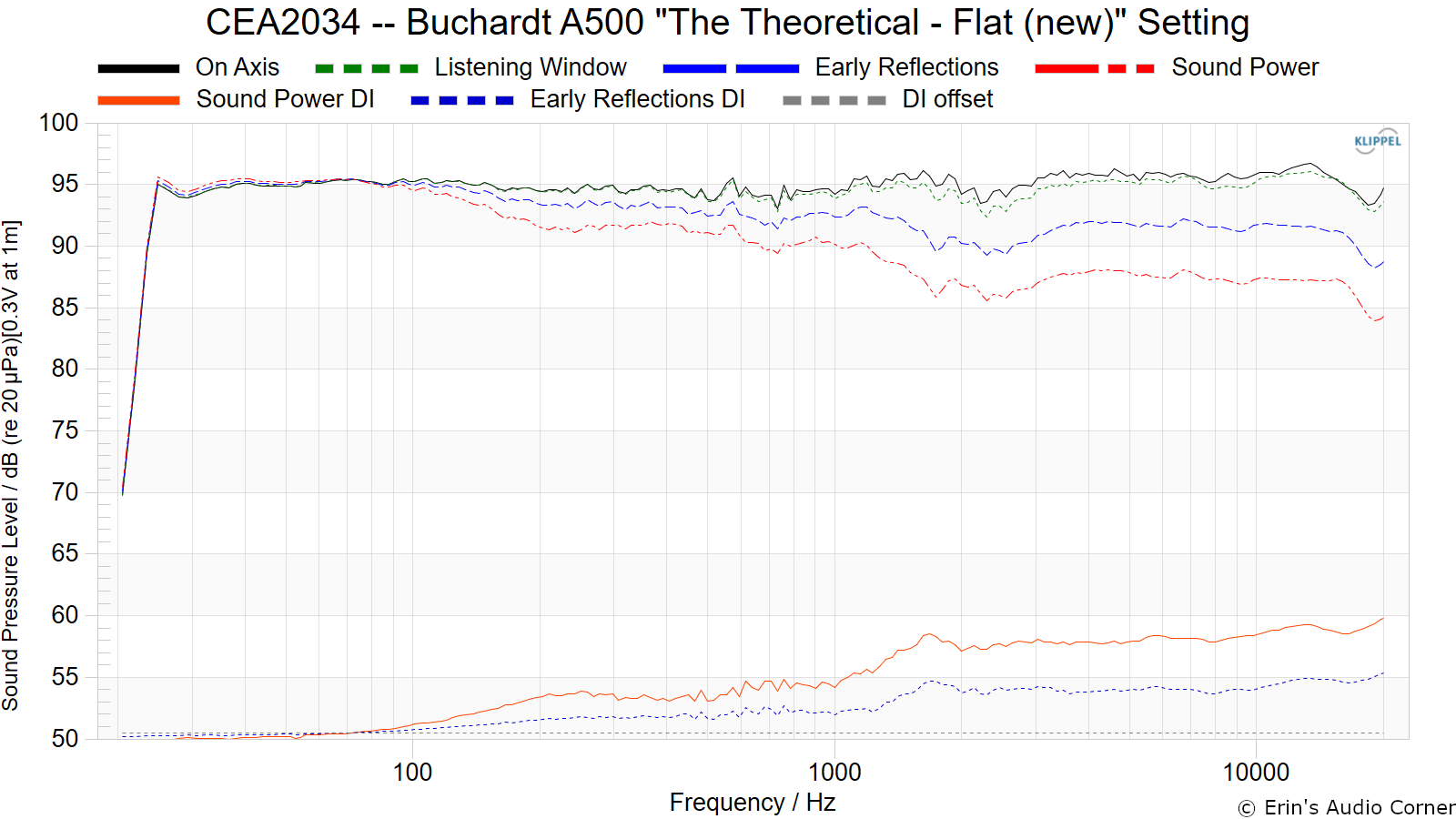
Early Reflections Breakout:
Floor bounce: average of 20º, 30º, 40º down
Ceiling bounce: average of 40º, 50º, 60º up
Front wall bounce: average of 0º, ± 10º, ± 20º, ± 30º horizontal
Side wall bounces: average of ± 40º, ± 50º, ± 60º, ± 70º, ± 80º horizontal
Rear wall bounces: average of 180º, ± 90º horizontal

Estimated In-Room Response:
In theory, with complete 360-degree anechoic data on a loudspeaker and sufficient acoustical and geometrical data on the listening room and its layout it would be possible to estimate with good precision what would be measured by an omnidirectional microphone located in the listening area of that room. By making some simplifying assumptions about the listening space, the data set described above permits a usefully accurate preview of how a given loudspeaker might perform in a typical domestic listening room. Obviously, there are no guarantees, because individual rooms can be acoustically aberrant. Sometimes rooms are excessively reflective (“live”) as happens in certain hot, humid climates, with certain styles of interior décor and in under-furnished rooms. Sometimes rooms are excessively “dead” as in other styles of décor and in some custom home theaters where acoustical treatment has been used excessively. This form of post processing is offered only as an estimate of what might happen in a domestic living space with carpet on the floor and a “normal” amount of seating, drapes and cabinetry.
For these limited circumstances it has been found that a usefully accurate Predicted In-Room (PIR) amplitude response, also known as a “room curve” is obtained by a weighted average consisting of 12 % listening window, 44 % early reflections and 44 % sound power. At very high frequencies errors can creep in because of excessive absorption, microphone directivity, and room geometry. These discrepancies are not considered to be of great importance.

Horizontal Frequency Response (0° to ±90°):

Vertical Frequency Response (0° to ±40°):

Horizontal Contour Plot (normalized):

Vertical Contour Plot (normalized):

“Globe” Plots
Horizontal Polar (Globe) Plot:
This represents the sound field at 2 meters - above 200Hz - per the legend in the upper left.
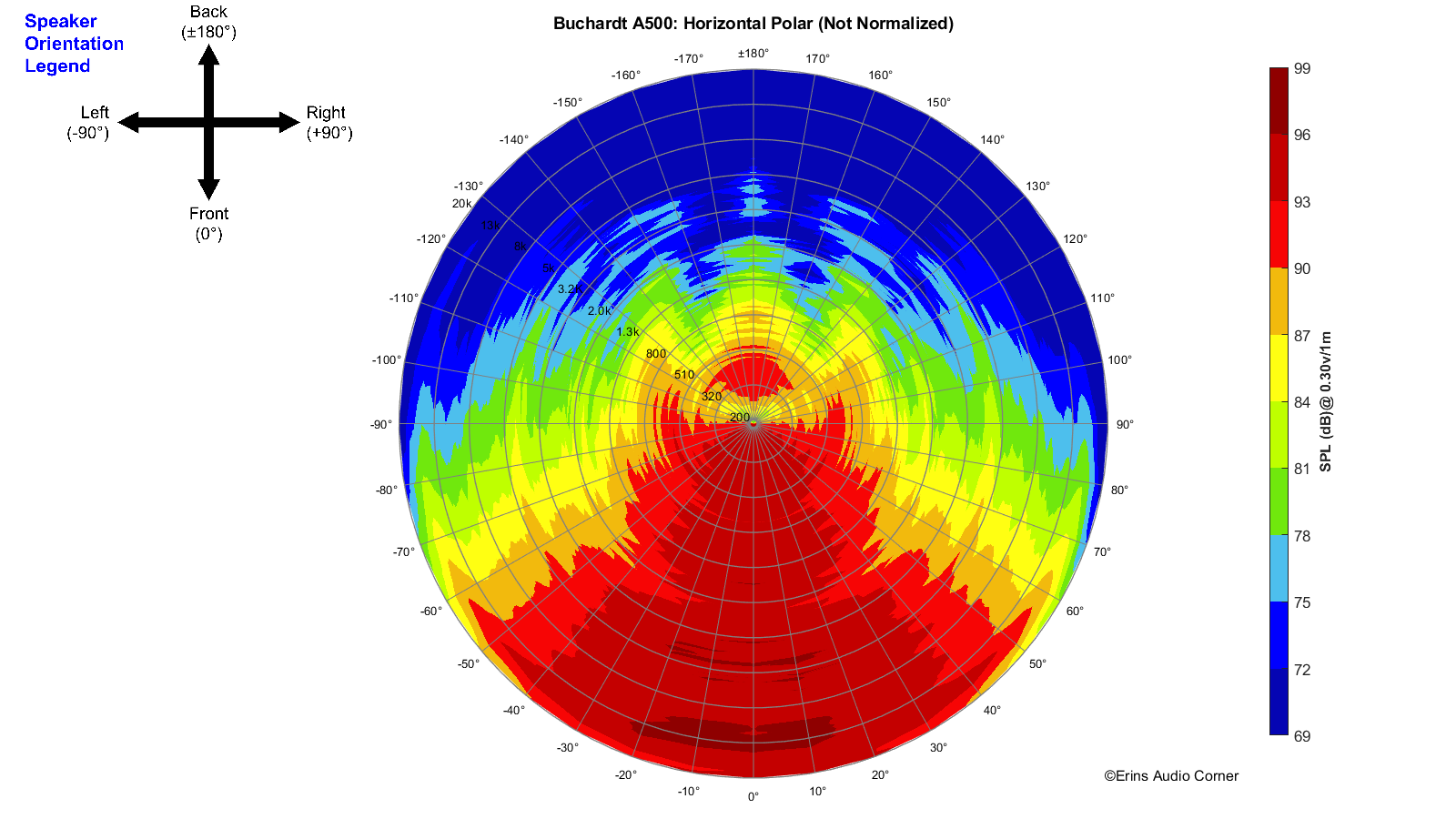
Vertical Polar (Globe) Plot:
This represents the sound field at 2 meters - above 200Hz - per the legend in the upper left.
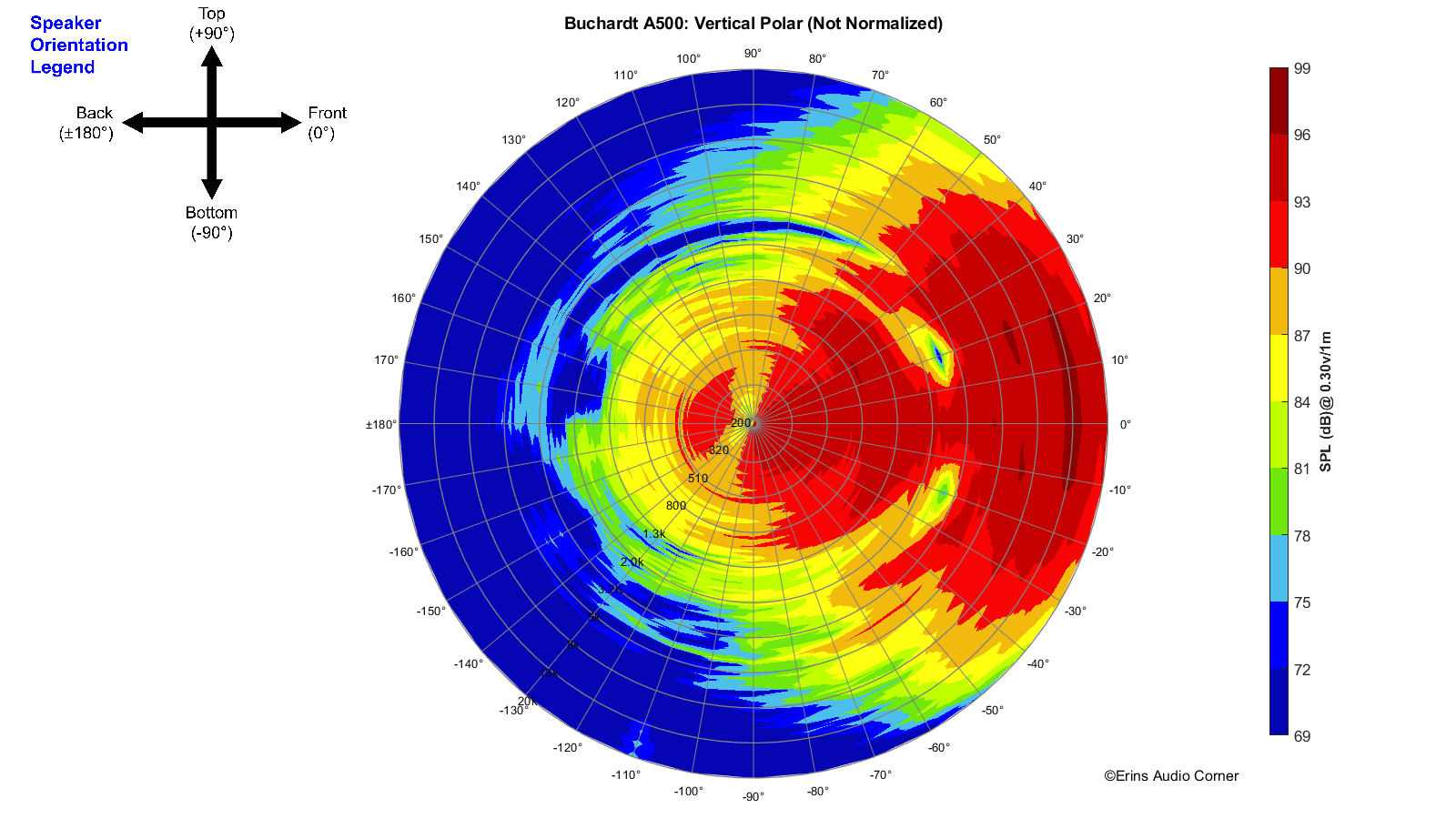
Additional Measurements
Step Response

Group Delay
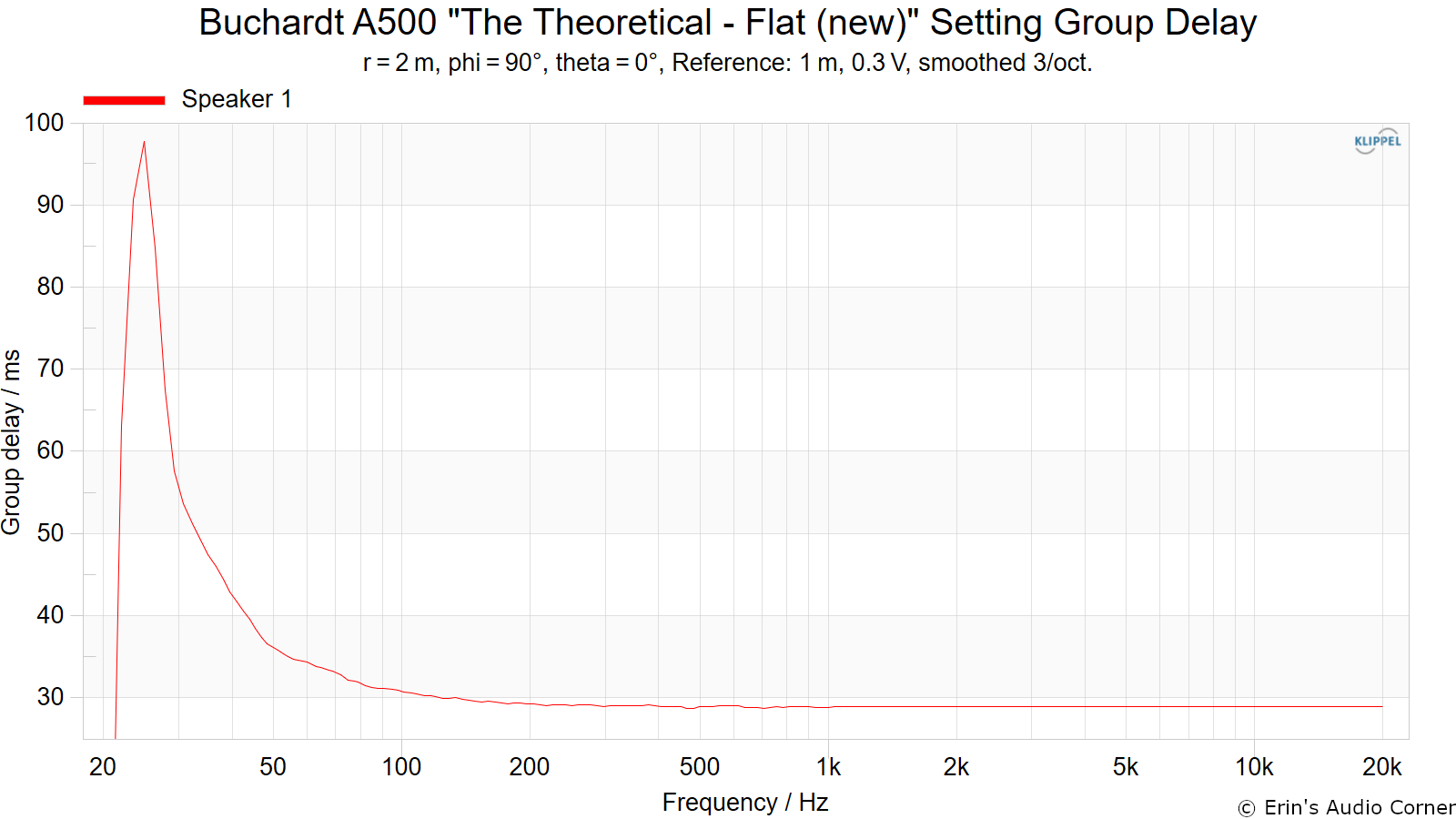
Harmonic Distortion
Harmonic Distortion at 86dB @ 1m:
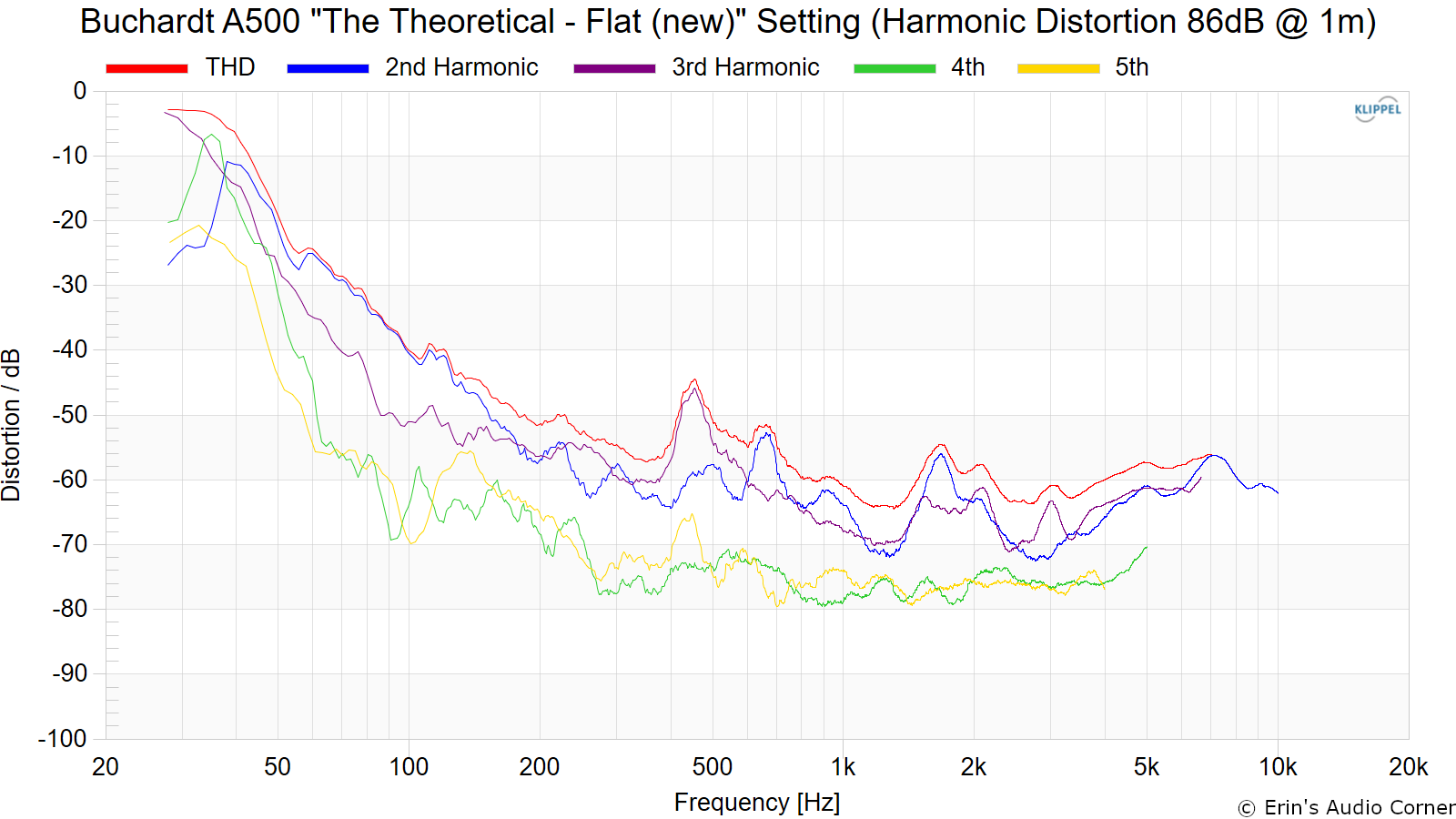
Harmonic Distortion at 96dB @ 1m:
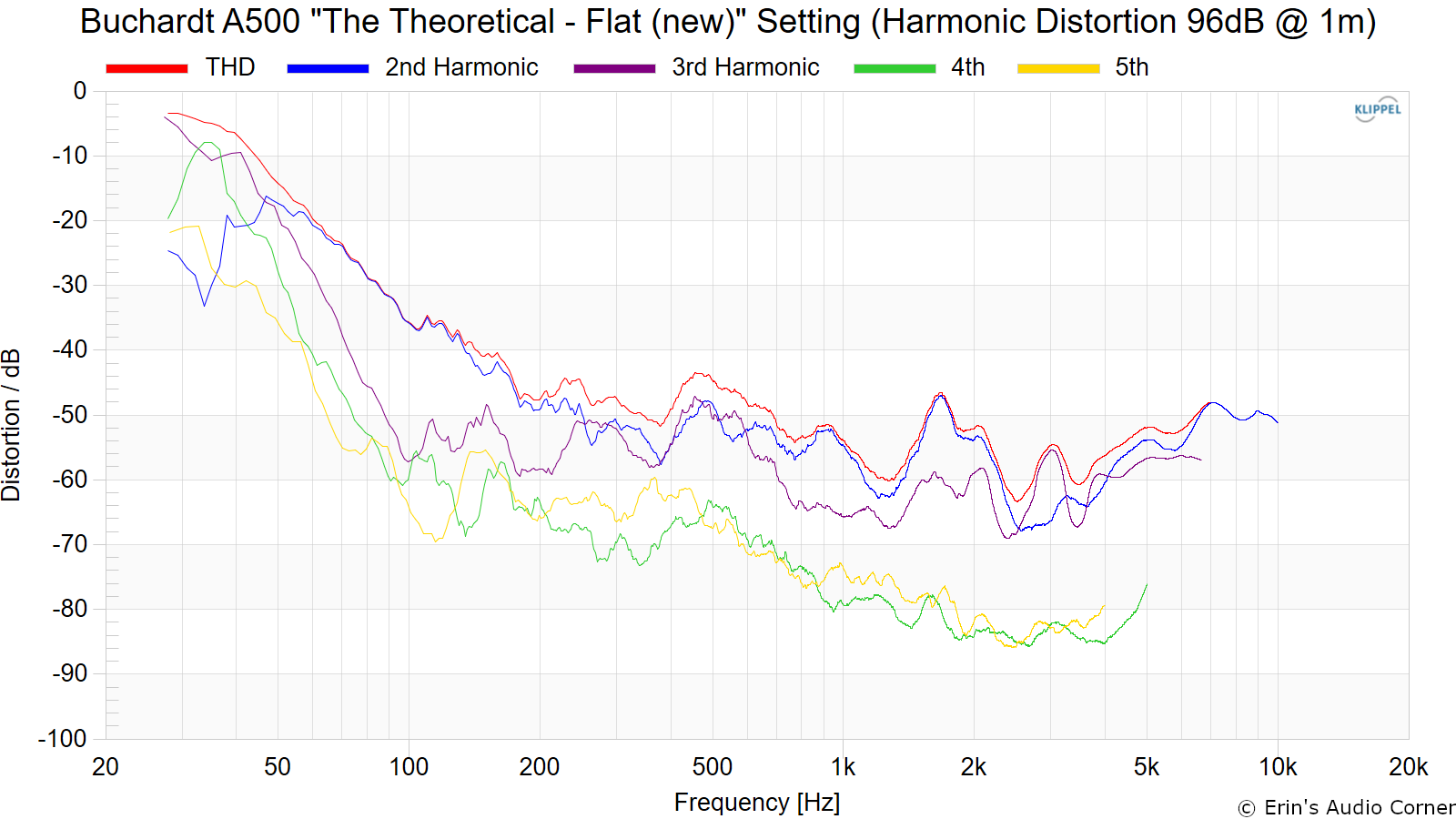
Dynamic Range (Instantaneous Compression Test)
The below graphic indicates just how much SPL is lost (compression) or gained (enhancement; usually due to distortion) when the speaker is played at higher output volumes instantly via a 2.7 second logarithmic sine sweep referenced to 76dB at 1 meter. The signals are played consecutively without any additional stimulus applied. Then normalized against the 76dB result.
The tests are conducted in this fashion:
- 76dB at 1 meter (baseline; black)
- 86dB at 1 meter (red)
- 96dB at 1 meter (blue)
- 102dB at 1 meter (purple)
The purpose of this test is to illustrate how much (if at all) the output changes as a speaker’s components temperature increases (i.e., voice coils, crossover components) instantaneously.
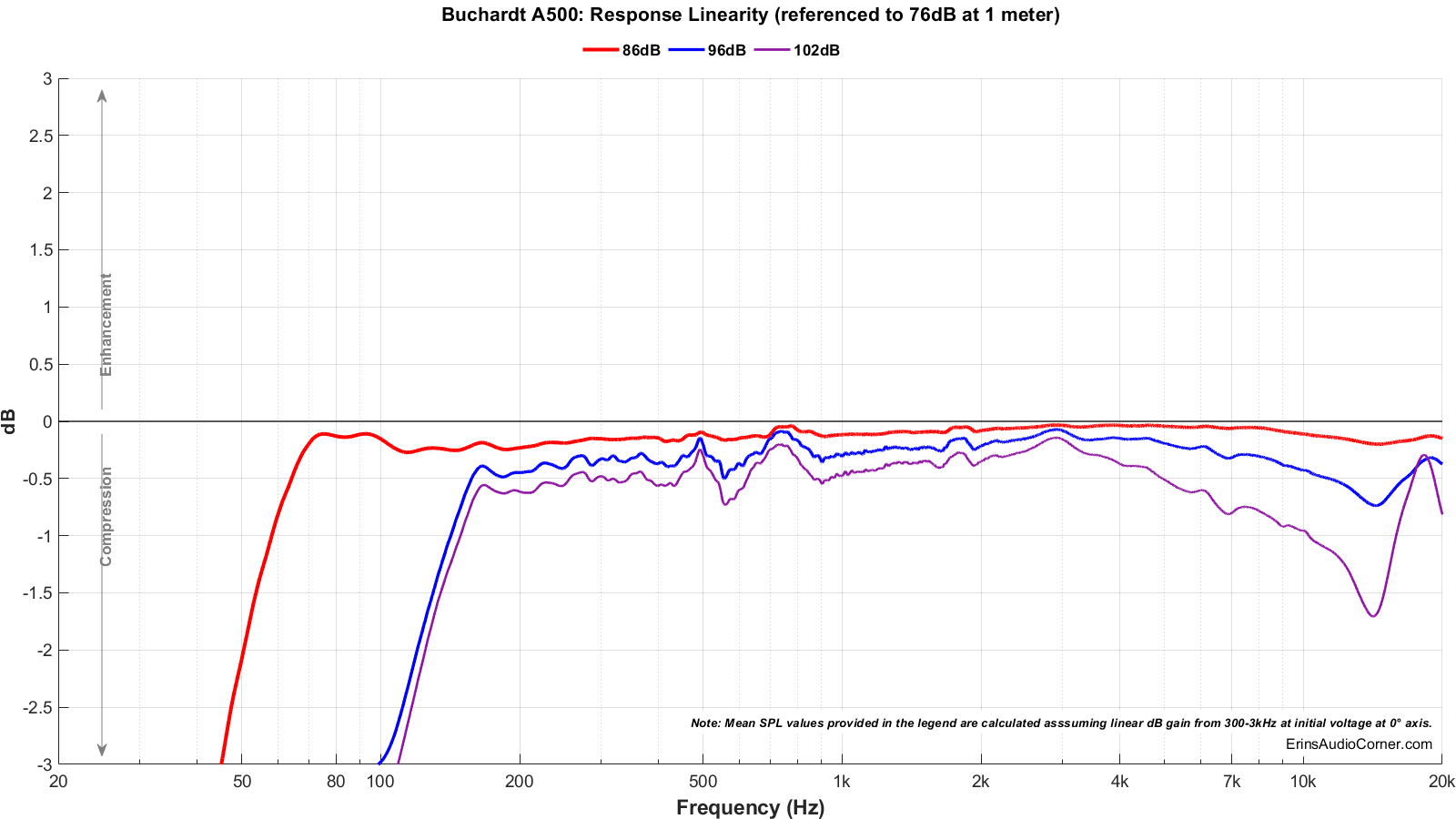
Additional DSP Settings (note the title for setting)
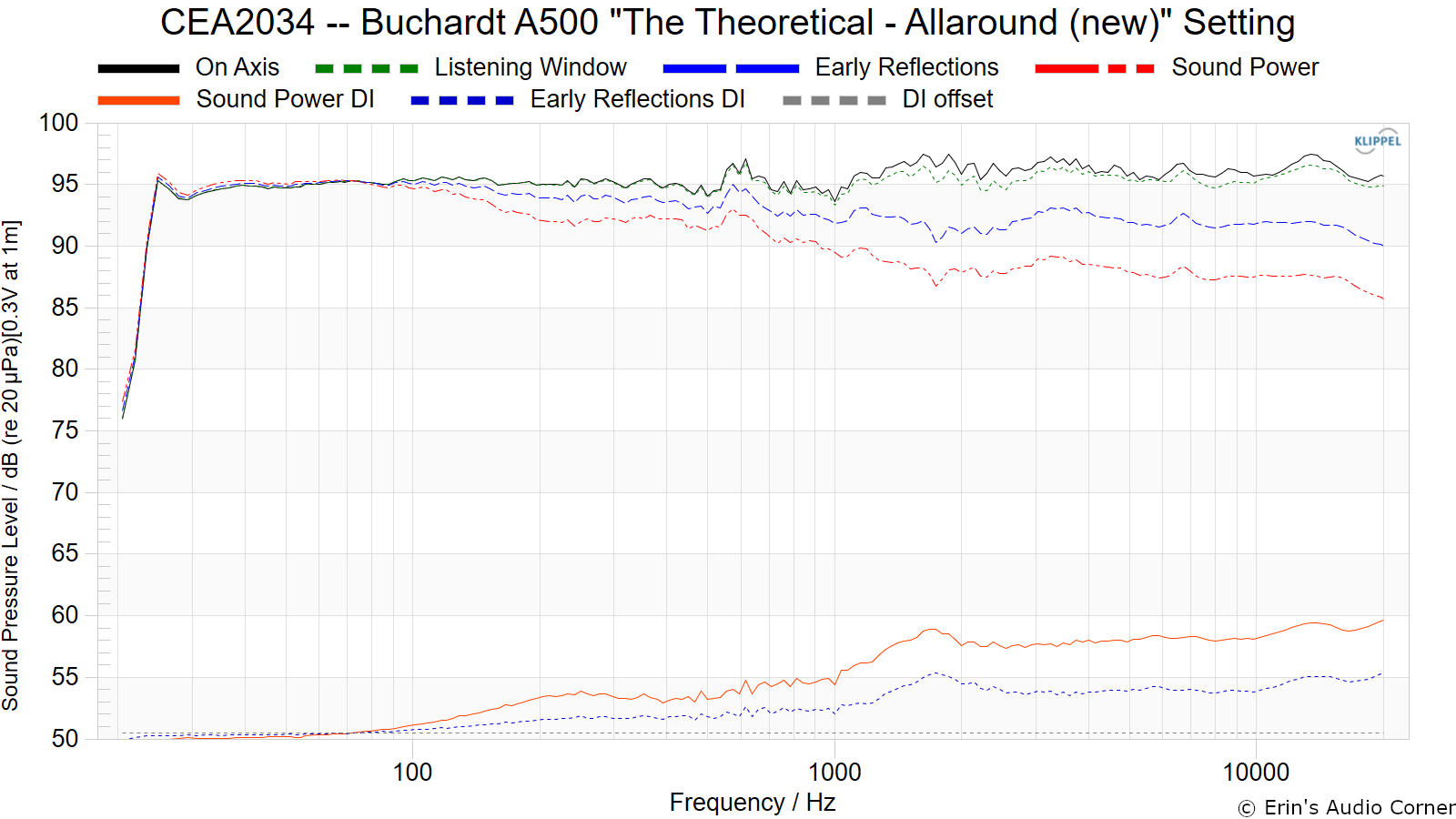
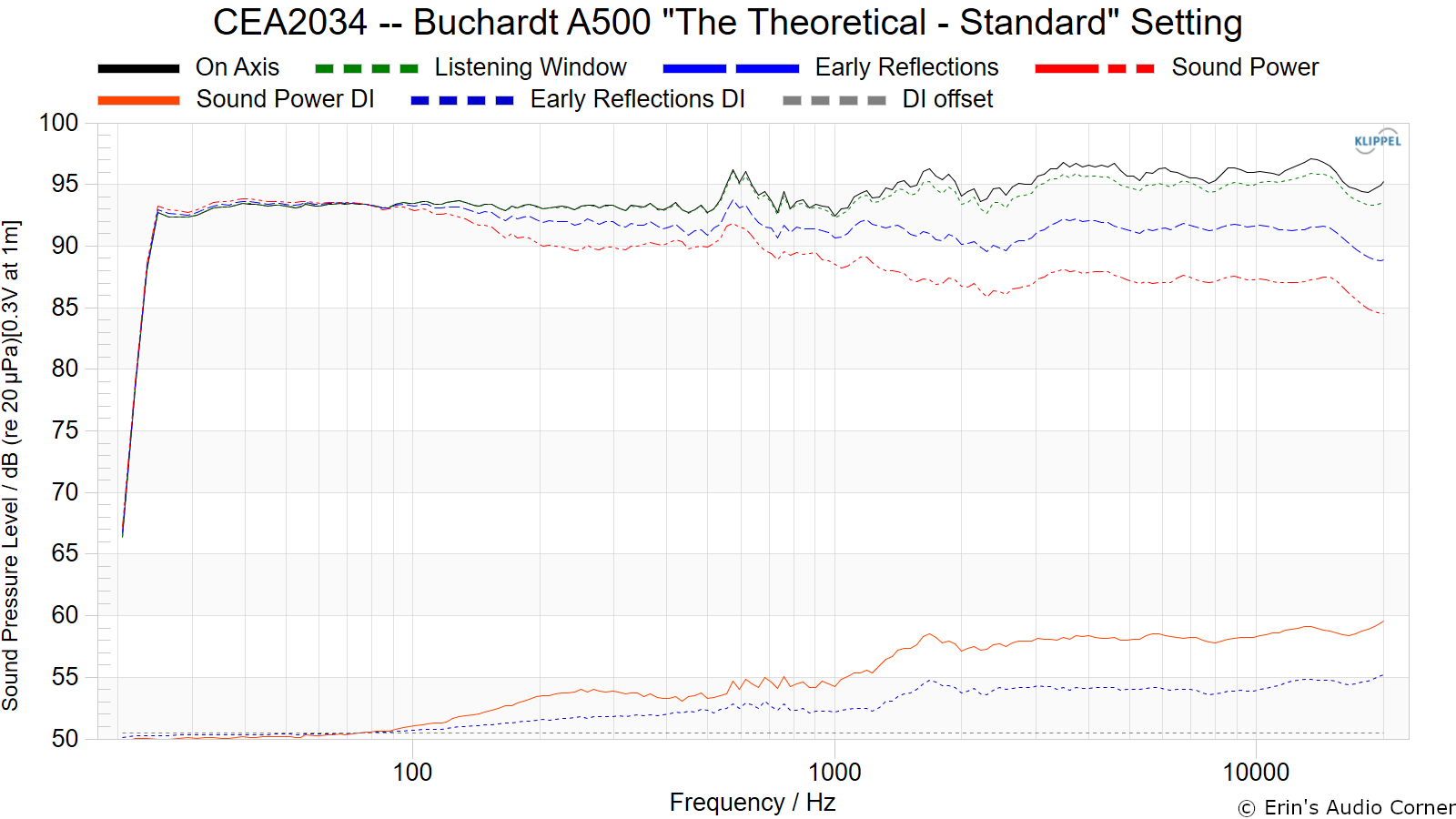
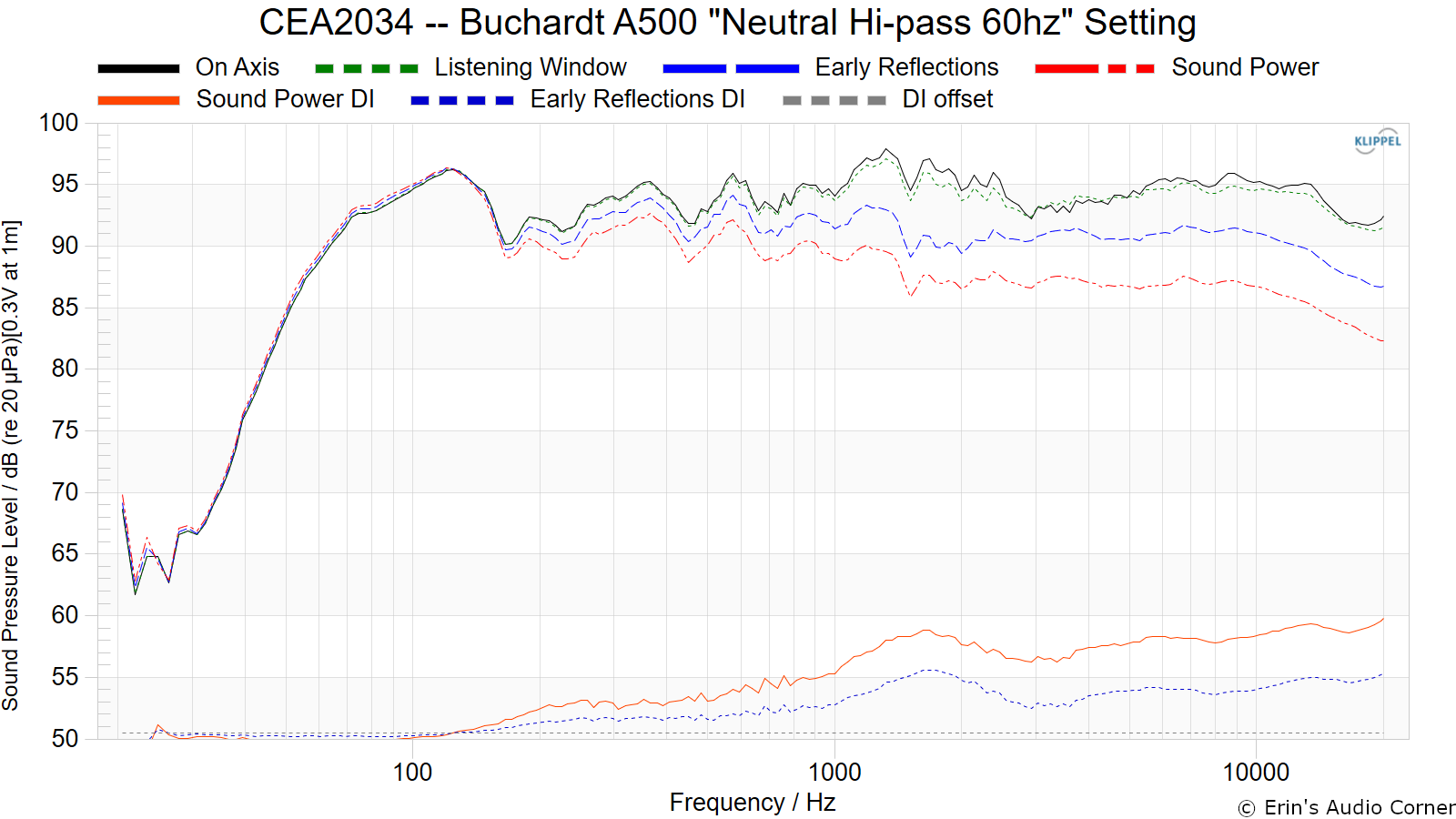
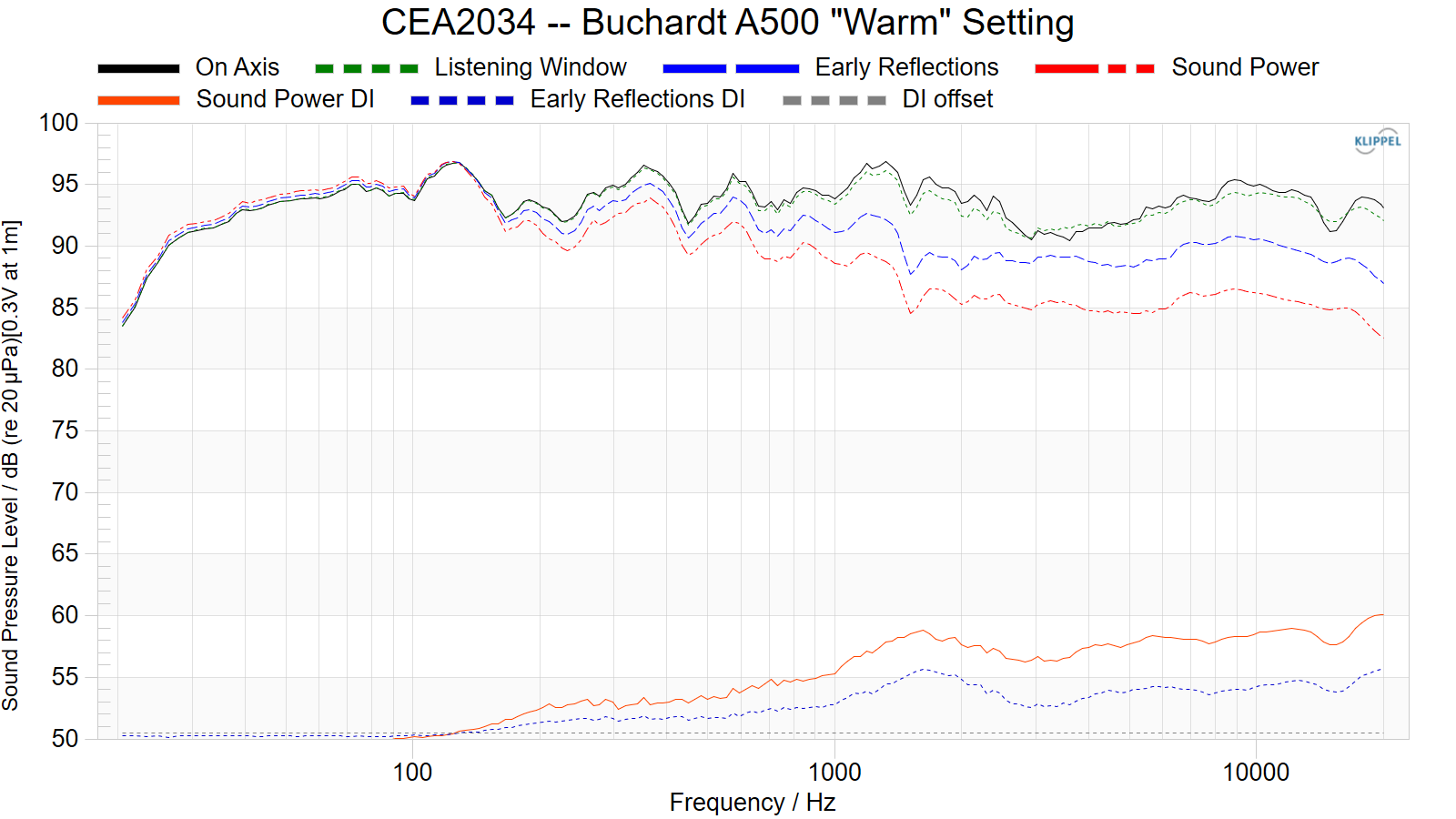
Parting / Random Thoughts
See video linked above for subjective and objective analysis. But just a couple notes:
- I really, really like this speaker in the “Theoretical - Flat (new)” tuning. I did try a few other DSP options but continually came back to preferring the “Theoretical - Flat (new)” setting.
- If you plan to purchase these speakers, spend the extra money and purchase the Platin Hub. It’s a no brainer purchase. Spend the extra money. It provides “room eq” and “manual eq”. Both of which are easy to use and very useful.
- Remember, these results are with the DSP enabled to provide fullrange reproduction and it does it incredibly well. The distortion and compression (limiting) data indicate this speaker does not take kindly to high output volume but in my listening experience in my home theater at about 3 meters away, I was maxing out at about 105dB (in the midrange/highs). I was pushing this speaker hard without any mechanical noise (which indcates the limiter is protecting the drivers as it should) but, more imporantly, I did not feel the speaker was unable to provide adequate output at this listening distance. I did not notice problematic distortion. So, yes, the data indicates this speaker is only capable of getting so loud but that “so loud” should be plenty for most people. And if you have a subwoofer to pair with these then use a HPF on these to alleviate the distortion/limiting concerns.
Support the Cause
If you find this review helpful and want to help support the cause there are a few ways you can do so below. Your support helps me pay for new items to test, hardware, miscellaneous items needed for testing and costs of the site’s server space and bandwidth. Any help is very much appreciated.
Or using my generic Amazon affiliate banner below to buy anything you may need - from toothpaste to Blu-Ray Discs - from Amazon, which helps me gain a small commission at no additional cost to you. Speaker wire is just the generic link I chose to provide.
You can also join my Facebook and YouTube pages if you’d like to follow along with updates.